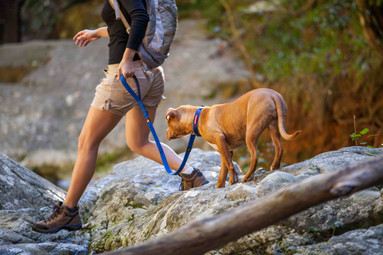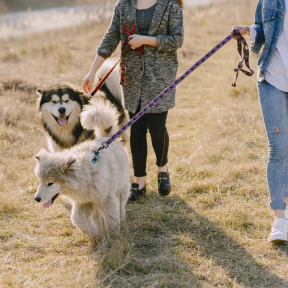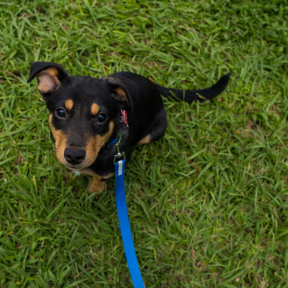How to Leash Train a Dog
30th Sep 2022
One of the first lessons you will teach your dog is how to walk on a leash. Leash walking is an important skill for all dog owners as it's the foundation for obedience training, whether you have a new puppy or an older dog.
While training your dog will take time and patience, this step-by-step guide on how to leash train your dog offers guidance on basic techniques and strategies of leash training.
Why Is Leash Training Important?
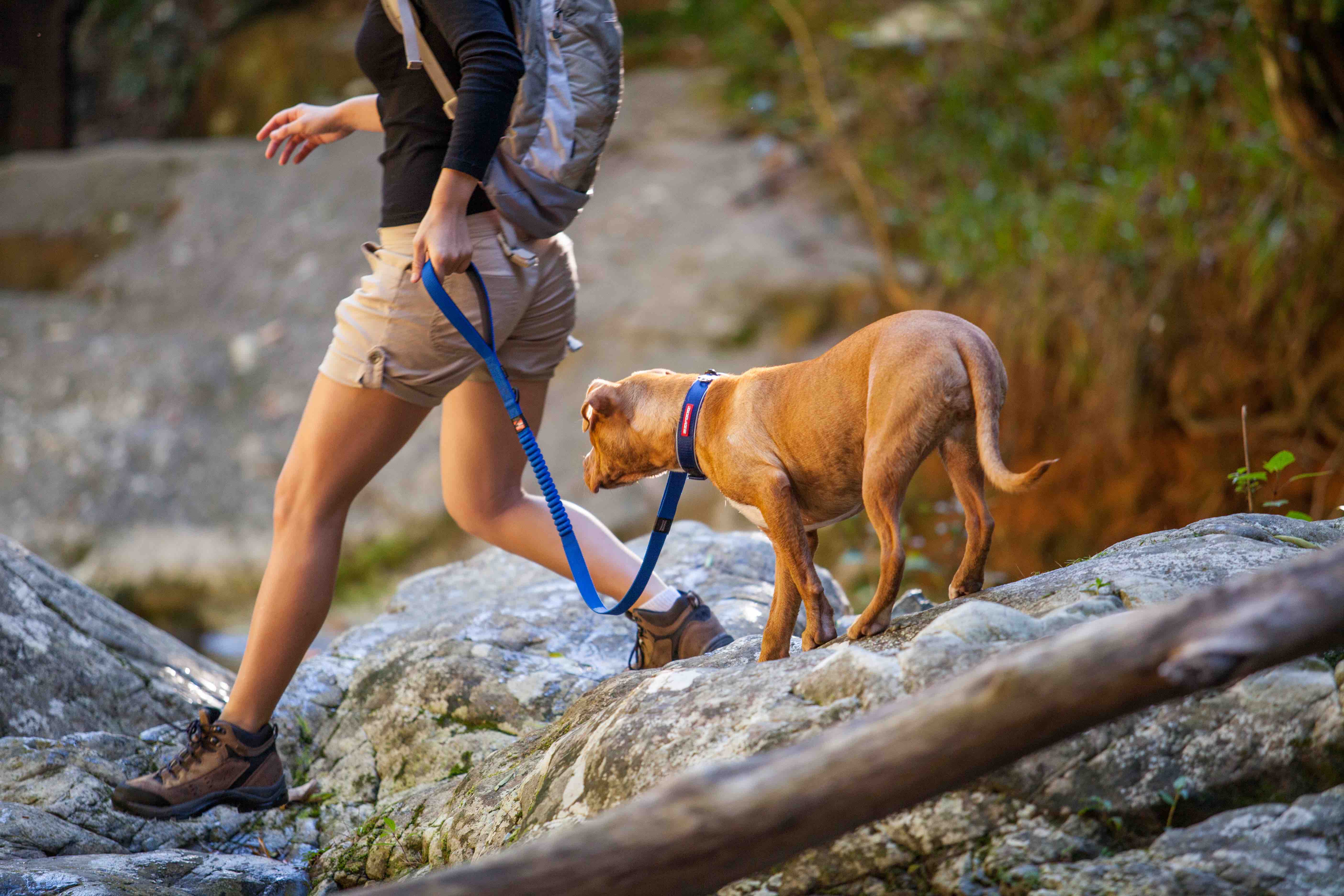
Leash training also provides the structure that dogs need. It is important that a dog clearly knows what is expected of them and how to meet those expectations. Leash walking gives parameters and clear rules to follow. While some dogs may fight the leash at first, most will eventually come to enjoy it and get excited when they see you pick up their leash because they know it means they get to do fun stuff with you. It can even become a bonding experience for the two of you as your dog learns to trust you, respect you, and obey you.
What You’ll Need
You only need a few basic items:
- Collar or harness – Different types of collars and leashes can address different issues. A basic collar that goes around the dog's neck works well if your dog has no behavioral or health issues. However, a harness, head halter, martingale collar, or front clip harness may be a better choice because they work better for small dogs that may be more delicate (such as chihuahuas), dogs with trachea issues, and any condition that would be exacerbated if pressure was exerted on the neck area (where a collar would normally sit). Additionally, many harnesses are very good for discouraging leash pulling or for dealing with canine Houdinis who are adept at getting out of a buckle collar.
- Leash – Choosing the right leash is important. You want one that is between 4 feet and 6 feet long, but avoid retractable leashes. Many veterinarians discourage the use of retractable leashes even if the dog is leash trained because they can be dangerous for both dog and human. But the fact that they don’t offer much by way of control makes them a poor choice for leash training. Instead, choose a regular, fixed leash that is long enough that it doesn’t pull on the dog while it walks beside you, but short enough to keep it from lunging ahead or falling behind. The length you choose will depend on your height as well as the dog’s size. Taller people with smaller dogs will probably need a longer leash while shorter people with larger dogs will do better with a shorter leash.
- Reward – Positive reinforcement is a powerful training tool. You want to reward your dog for good behavior and for mastering this important skill, but treats aren’t the only reward – and they should not be the first or most common reward. Use pets and lots of “good boy/girl!” to encourage your dog. When they walk on the leash well, have a party. Get excited. Pet them, love them, but use a treat as a very rare, special reward. Your dog would rather have your love and attention anyway. Avoid teaching your dog to expect a food treat. That’s the best way to show them love while keeping them happy and healthy.
- Patience – Leash training is not easy and you are probably going to need a lot of patience. While puppies can be a challenge to train, an adult dog can be just as frustrating at times. If you find that you are getting frustrated or irritated, end the training session and take a break.
Leash Training Techniques 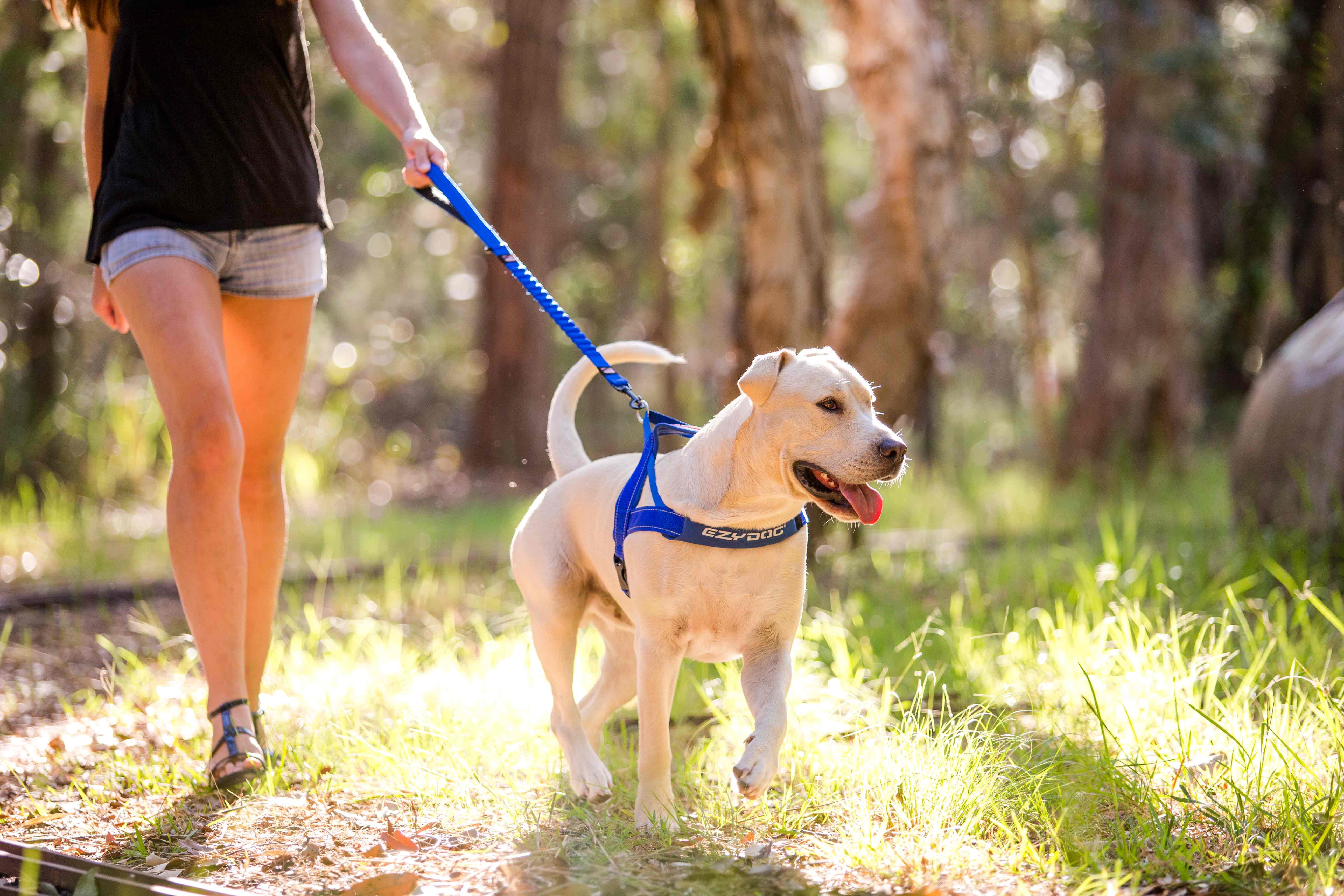
Leash training actually begins before you even take the first step outside. If your dog has never worn a collar or harness you need to get them used to that. Let them wear it while indoors so they can grow accustomed to how it feels while on. Once they are comfortable with that, attach a short leash. This step requires supervision so they don’t get tangled up in the leash, so stick close to your dog while they wear the leash in the house, but don’t pull on the leash. Just let them get used to it.
Once they are comfortable, it’s time to begin the lessons.
Loose leash - Loose leash walking is often called “off-duty” walking because the dog is not in the heel position and the only rule is that they are not allowed to pull.
- Choose a command for this type of walk such as “ease,” “hike,” or “free time.”
- Set the amount of leash that you will allow your dog before you get started. Remember, the point of a loose leash is that they are free to switch sides, look around, and sniff stuff, so you want to give them some space to do that. This might mean just holding the loop of a 6-foot leash, but if you do that, stay consistent. If you think that might be a problem, a shorter leash, say 4 feet, may be better.
- Give your dog the command you selected and begin walking. Remember, they can move about freely as long as they don’t pull.
- If your dog does pull, give the verbal command to “stop” then call them back to you and begin again.
- If your dog focuses on another dog, a person, or an animal, call your dog’s name to get their attention. Then try to move away from the distraction, preferably in the opposite direction. Getting closer to the distraction can be problematic and encourage pulling.
- When passing another walker, someone on a skateboard or bike, a runner, or another distraction, call your dog to the heel position until you have passed it.
Heel - Learning to heel on leash is the first step to off-leash training. It is a more disciplined walk that allows for verbal command, the click method, or gesture cues.
- Begin indoors teaching your dog to follow a small treat in your hand. If your dog isn’t food motivated, use a ball or toy. Some dogs that are very bonded to their owners will respond to gestures such as pointing, so do what works best for your dog.
- The traditional heeling side is the left, so put the treat in your left hand and hold it against your left side. Call your dog’s name and point to the side you want them to walk on.
- When your dog comes to the spot you are pointing to, immediately say “yes” or “good” and reward them. Repeat this several times then stop using verbal commands, just point to your side and let the dog come to you on its own then give the reward. Eventually, you can add eye contact by using commands like “watch me” or “look.”
- Once this is mastered, begin walking. Start by walking forward a few paces then stopping. Give the command “sit” when you stop if you want your dog to learn to sit when you stop walking.
- As your dog gets better at heeling, increase your pace, walk in patterns, and walk slowly. This challenges your dog to find the right place beside you each time you switch things up. It keeps them engaged and teaches them to be more in tune to you.
How to Handle Common Problems in the Leash Training Process
Unfortunately, leash training doesn’t always go smoothly. In fact, you are very likely to encounter at least one of these personality traits in your own dog during the training process.
- The lunger – The best course of action here is to avoid the target if possible. This means you will have to be alert and watch for anything that may inspire your pup to lunge, then try to go in another direction, distract your dog until the target passes, or teach your dog to sit and use the command “no” if he starts to lunge. Reward when he is successful.
- The puller – This common problem is best handled by not giving your dog what it wants. In other words, don’t follow your dog and definitely don’t yank, drag them with you, or pull back. Simply stand very still and refuse to move until your dog comes back to you and sits beside you. You may want to invest in a head halter or front hook harness if your dog is a puller.
- The barker – This is usually due to pent-up energy so increasing your dog’s exercise time and ensuring that he gets plenty of physical and mental stimulation can help to curb barking while on walks. If it is still a problem, try going in the opposite direction or offer your dog a treat before it starts to bark. That way when your dog gets the urge to bark at something he will be conditioned to direct his attention to you instead.
- The drama queen – The drama queen will lay down and refuse to get up or may cry, howl, or make awful noises that can be quite embarrassing on walks. If this is your dog, the first thing to do is make sure their collar or harness fits correctly, is the appropriate size, and isn’t binding them anywhere. You may also need to try different collars and harnesses until you find something your dog can live with. Then give them extra time to get used to it. When you put it on them, give a reward. Let them walk around the house while wearing it so they can get used to it and it isn’t such a “traumatic” experience for them.
- The rock – The stubborn dog that just sits down and refuses to move can be a real challenge. After you have made sure there isn’t a problem with the harness or collar, or a problem with the dog or the environment around you, then you can assume it’s just your dog’s personality. When he sits, he sits. Try encouraging him to move with a treat or reward. Hold the treat at your side so he can see it and give the verbal cue “come” or “heel” depending on what type of leash walking you are doing. When he obeys the command, give the reward.
When Should You Start Leash Training a Puppy?
You can introduce your puppy to a leash and collar at just a few weeks old. The key is to get your puppy to associate the collar and leash with positive feelings so wait until it is doing something fun like playing, eating, or getting cuddles from you, and gently slip the collar and leash on (the leash should already be attached to the collar at this stage so you don’t have that extra step – it’s just one smooth move). Use toys or treats as a reward for exhibiting the desired behavior.
When you bring your puppy home is when you start leash training them – or at least introducing the leash and collar. It should begin at day one just like other manners you teach like “sit” when you open the door to avoid door dashing.
Tips on Leash Training
Leash training should be a fun bonding experience for you and your dog. Here are a few tips to make it great.
- If your dog is doing well, then starts acting out, correct them once or twice, but then take a break. Their behavior is likely an indication that they are tired or bored.
- Keep your training sessions age appropriate. Puppies have much shorter attention spans than older dogs, but even older dogs get tired and overwhelmed and need a break. Avoid marathon training sessions because this can cause the dog to foster adverse feelings about the leash and leash walking.
- Teach your dog basic commands like “sit,” “stay,” “come,” and “down.” This will make leash training much easier.
- When you begin training, keep your first few sessions indoors where there are fewer distractions.
- Walks are a fun time for dogs to spend with you and check out their surroundings. Use rewards and positive reinforcement as much as possible to encourage positive feelings about walking on a leash.
- The first time or first few times you introduce the leash and collar make it as fun and positive as possible. If your dog is resistant, take a break and come back later. The last thing you want is for your dog to fear the collar and leash.
Leash Training Equipment from EzyDog
Are you looking for the perfect collar and leash for your dog? EZYDOG has all the accessories that you need for leash training and a lot more. Find just what you’re looking for from canine life jackets to front-clip harnesses to dog clothing and more!

